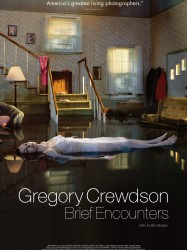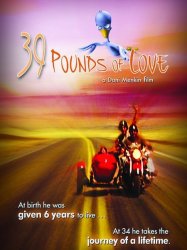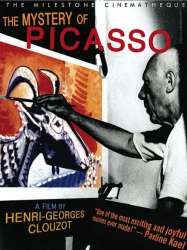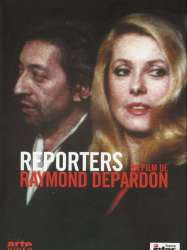Films with theme "Documentary films about the visual arts", sorted by revenue

Waking Sleeping Beauty (2009)
, 1h26Directed by Don Hahn
Origin USA
Genres Documentary
Themes Films about films, Documentary films about business, Documentary films about the visual arts, Documentary films about the film industry, Documentary films about cities, Musical films, Children's films
Actors Roy E. Disney, Michael Eisner, Jeffrey Katzenberg, Frank Wells, Howard Ashman, Steven Spielberg
The film covers the fall and rebirth of Disney's animation division, the effects the new corporate team of Michael Eisner, Frank Wells, and Jeffrey Katzenberg had on the division, the competition with Don Bluth's animation studio, the pivotal roles of Who Framed Roger Rabbit and the CAPS system, the introduction of the home video format, and the new-found success the studio had from 1989-1999.
 , 1h45
, 1h45Origin USA
Genres Documentary
Themes Documentary films about the visual arts, Documentaire sur une personnalité
Le film retrace la vie et l'œuvre de l'artiste américaine d'origine chinoise Maya Lin.
 , 1h17
, 1h17Origin USA
Genres Documentary
Themes Documentary films about the visual arts, Documentaire sur une personnalité
Actors Russell Banks
An acclaimed photographer with the eye of a filmmaker, Gregory Crewdson has created some of the most gorgeously haunting pictures in the history of the medium. His meticulously composed, large-scale images are stunning narratives of small-town American life—moviescapes crystallized into a single frame.

Side by Side (2012)
, 1h38Origin USA
Genres Documentary
Themes Films about films, Documentary films about business, Documentary films about the visual arts, Documentary films about the film industry
Actors James Cameron, David Fincher, John Malkovich, Danny Boyle, David Lynch, Robert Rodríguez
The documentary investigates the history, process and workflow of both digital and photochemical film creation. It shows what artists and filmmakers have been able to accomplish with both film and digital and how their needs and innovations have helped push filmmaking in new directions. Interviews with directors, cinematographers, colorists, scientists, engineers and artists reveal their experiences and feelings about working with film and digital.

Beautiful Losers (2008)
, 1h29Directed by Joshua Leonard, Aaron Rose
Origin USA
Genres Documentary
Themes Films about films, Documentary films about business, Documentary films about the visual arts, Documentary films about the film industry, Documentaire sur une personnalité, Documentary films about films
Actors Harmony Korine, Mike Mills, Aaron Rose

39 Pounds of Love (2005)
, 1h10Directed by Dani Menkin
Origin USA
Genres Documentary, Romance
Themes Documentary films about business, Documentary films about the visual arts, Documentary films about the film industry, Documentaire sur une personnalité, Films about disabilities
 , 1h32
, 1h32Origin USA
Genres Documentary
Themes Documentary films about the visual arts
The film narrates how African Americans have used camera to bring social changes.

How to Draw a Bunny (2002)
, 1h30Origin USA
Genres Documentary
Themes Documentary films about the visual arts, Documentaire sur une personnalité

Who Does She Think She Is (2008)
Genres Documentary
Themes Documentary films about the visual arts, Documentaire sur une personnalité
The film follows five women, ranging in age from 27 to 65 from all over the United States as they chart a path to create their individual type of art.

Marwencol (2010)
, 1h23Origin USA
Genres Documentary
Themes Medical-themed films, Documentary films about the visual arts, Documentaire sur une personnalité, Documentary films about health care, Films about psychiatry, Films about disabilities
On April 8, 2000, Mark Hogancamp was attacked outside of a bar by five men who beat him nearly to death. After nine days in a coma and forty days in the hospital, Mark was discharged with brain damage that left him little memory of his previous life. Unable to afford therapy, Mark creates his own by building a 1/6-scale World War II-era Belgian town in his yard and populating it with dolls representing himself, his friends, and even his attackers. He calls that town "Marwencol," a portmanteau of the names "Mark," "Wendy" and "Colleen." He rehabilitates his physical wounds by manipulating the small dolls and props — and his mental ones by having the figures act out various battles and stories.

With André Gide (1952)
, 1h29Directed by Marc Allégret
Origin France
Genres Documentary
Themes Documentary films about the visual arts, Documentaire sur une personnalité
Actors Jean Desailly, Gérard Philipe, Jean-Louis Barrault, Roland Alexandre, Roger Vadim, Renée Faure
Portrait intime d'André Gide, illustré d'archives personnelles de Gide, mais qui retrace aussi l'œuvre de Gide, ses rencontres (Jean-Paul Sartre, Antoine de Saint-Exupéry, etc.), la NRF...

The Mystery of Picasso (1956)
, 1h18Directed by Henri-Georges Clouzot
Origin France
Genres Documentary, Historical, Animation
Themes Peinture, Documentary films about the visual arts, Documentaire sur une personnalité
Actors Claude Renoir, Henri-Georges Clouzot
Cherchant à percer le mystère de la création, le cinéaste se dit : «Pour savoir ce qui se passe dans la tête d'un peintre, il suffit de suivre sa main». Un habile stratagème lui permet de réaliser son projet insensé : par transparence, chaque trait tracé par la main du célèbre artiste apparaît dans l'espace. Mais l'exécution, par Pablo Picasso, de dessins et de tableaux, ne fait que gonfler davantage le mystère qui plane autour de lui : en effet, chacun des traits qu'il effectue étonne et déconcerte. Des toreros blessés et des nus sont ainsi créés, comme par magie, fruits d'un travail acharné qui connaît parfois quelques échecs.

Reporters (1981)
, 1h30Directed by Raymond Depardon
Origin France
Genres Documentary
Themes Documentary films about the visual arts, Photographie
Actors Ursula Andress, François Caron, Coluche, Mireille Darc, Alain Delon, Catherine Deneuve
Le métier de reporters filmé par le réalisateur et photographe Raymond Depardon. Caméra à l'épaule et sans aucun commentaire, ce film est caractéristique d'une certaine forme de cinéma direct.
 , 11minutes
, 11minutesOrigin France
Genres Documentary
Themes Films about writers, Poésie, Films about sexuality, Documentary films about the visual arts, Documentaire sur une personnalité, LGBT-related films, LGBT-related film
Illustrée par un montage d'images et de photographies, sur un rythme musical afro-jazzy en harmonie avec le récit en voix off par Claude Nougaro de l'Alchimie du verbe.

Arthur Rimbaud: A Biography (1991)
, 2h21Origin France
Genres Biography, Documentary
Themes Films about writers, Poésie, Films about sexuality, Documentary films about the visual arts, Documentaire sur une personnalité, Documentaire sur la poésie, LGBT-related films, LGBT-related film
Actors Jacques Bonnaffé, Bernard Bloch, Christiane Cohendy, Madeleine Marie, Albert Delpy, Jean Dautremay
Ernest Delahaye, ami d'enfance d'Arthur Rimbaud, se remémore sa rencontre avec le poète et sa famille à Charleville-Mézières. De sa naissance en 1854 jusqu'à sa mort à Marseille en 1891, on assiste à la destinée d'un être hors-norme :
 Connection
Connection